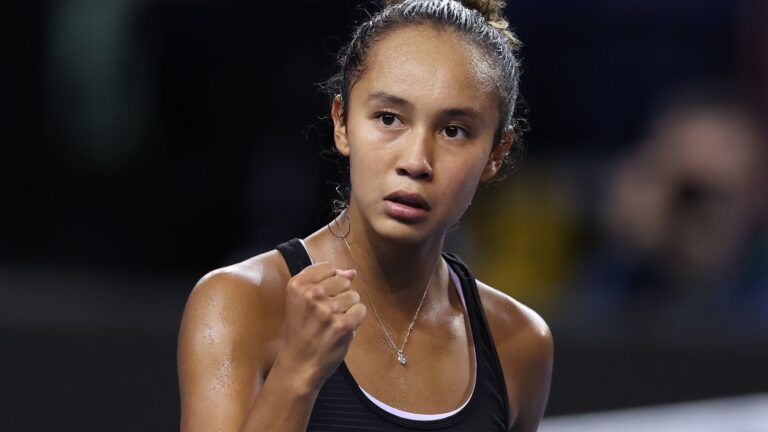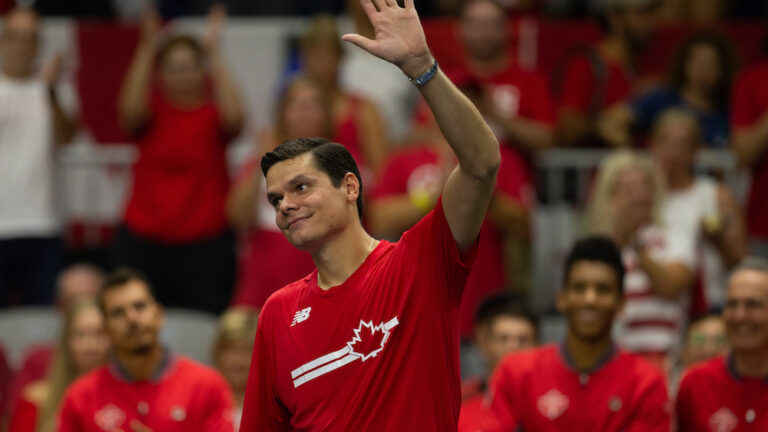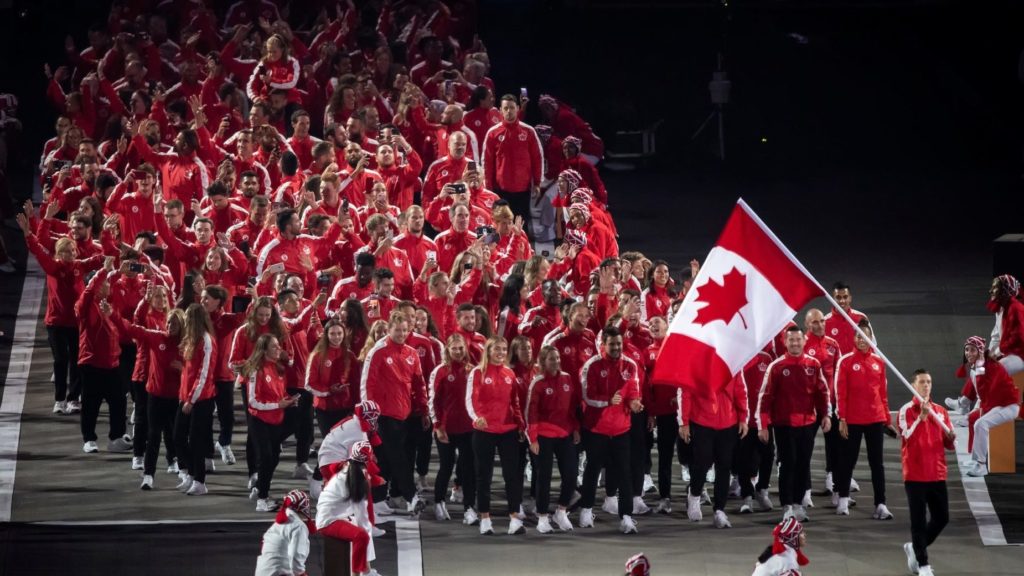
Photo : Canadian Olympic Committee/Vincent Ethier
It’s a question that’s been floating around for a while, and it doesn’t seem like a clear-cut answer will be emerging any time soon.
COVID-19 or not, do the aces of the WTA and ATP even want to play Olympic tennis?
The current global situation has a lot of headliners asking themselves whether the Games are a good idea. They really want to play, but…
Without naming names, the pandemic may be the perfect excuse for some, and it’s launched a debate at which you’ll hear a lot of opinions.
For instance, Naomi Osaka, Kei Nishikori, Rafael Nadal and Roger Federer recently expressed their reservations about the Tokyo Games.
By reservations, I mean their official statements on a topic that has become a hot potato for these international superstars, who also happen to be among the planet’s most compelling influencers. And let’s not forget the impact on their lucrative financial agreements with a slew of major sponsors.
Most importantly, there’s the possible health risk. With the opening ceremonies less than 10 weeks away, Japan is currently grappling with a fourth wave.
For now, let’s take a quick look back at the recent history of Olympic tennis.
What do Miloslav Mecir, Marc Rosset, Lindsay Davenport, Nicolas Massu, Elena Dementieva and Monica Puig all have in common? The Olympic gold in their trophy cases—an illustrious prize and certainly the most prestigious of an ordinary career since tennis’ Olympic resurrection in 1988.
What do Roger Federer, Novak Djokovic, Maria Sharapova, Pete Sampras, Monica Seles, Arantxa Sanchez-Vicario, Boris Becker, Martina Hingis and Stefan Edberg all have in common? For one thing, they don’t have Olympic gold in singles tennis in their trophy cases despite their monumental hauls from the world’s biggest tournaments.
Even so, I’m not convinced the shortcoming has (or will) tarnish their respective records.
Just as it is for golf, basketball, baseball, hockey, soccer and cycling stars (and without questioning their patriotism), an Olympic medal is incidental.
But for athletes in other disciplines—like athletics, cross-country skiing, swimming, figure skating and speed skating, gymnastics, fencing, bobsleigh, weightlifting and volleyball—gold is the holy grail.
Let me be clear: I’m not knocking those sports. I’m just saying that first place at the Olympics means more to some than others.
As far as the tennis pros who are more reluctant to compete, I’m sure they want to play at the Olympics, just not at these Olympics, in Tokyo, this summer. Even though Naomi Osaka is Japan’s newly minted megastar; even though Roger really wants the one title he hasn’t been able to secure and even though proud Spaniard Rafael Nadal already has two.
Between you and me, Olympic glory won’t make much difference to them.
Will it make a difference to their respective legacies?
The players owe it to the major corporations with which they have so many sponsorship deals to be very, very careful. Short of taking a stance, they’re still doing what they have to by telling us what we want to hear and delivering precooked messages edited several times over by various handlers and attorneys.
Remember the 2016 Olympic Games in Rio? Zika virus spoiled the party, but the impact just doesn’t compare to what’s happening today.
Still, in the month leading up to the event, Wimbledon finalist Milos Raonic, Simona Halep, Dominic Thiem, John Isner and Tomas Berdych were among those who chose to skip their turn, along with a bunch of stars from basketball, golf and other sports.
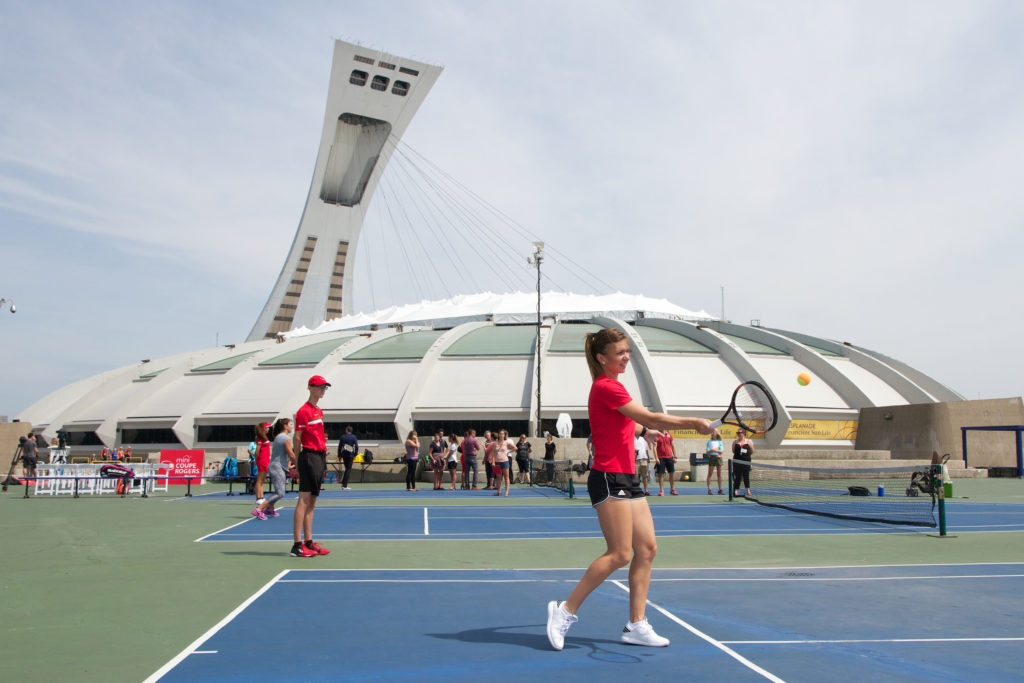
Short of a huge turnaround in Tokyo (and we truly hope there will be), I’m preparing for an avalanche of withdrawals between now and July.
Unless Japan chooses to forfeit, that is.
Sharon The Phoenix Fichman
As I watched Canadian Sharon Fichman win on Roman clay with her doubles partner Giuliana Olmos of Mexico, the image of a phoenix immediately came to mind.
At the age of 30, Fichman won the most important title of her career.
In Greek mythology, the phoenix has an especially long life, since it rises from its own ashes to be born again.
And what a resurgence it’s been for Sharon! Battered by injuries and convinced she was done with tennis, she retired in spring 2016. But just two years later, after coaching and working as a tennis analyst at Sportsnet, she elected to get back in the game in April 2018.
Since then, she’s competed at every level and won her share of semis and finals with a few different partners. Finally, on Sunday, May 16, everything came together in an apotheosis.
Today, she sits at a career high ranking of No.31 in doubles, right behind Olmos.

When I set out to talk to someone who understand every facet of Sharon’s immense achievement, I stumbled upon one of Sharon’s friends, a former WTA player who rose as high as No.54 in the doubles rankings in 2010, a former doubles partner of Sharon’s (fall 2012) and a former commentator colleague of mine at TVA Sports with whom I spent the last four National Bank Open events in Montréal.
Thankfully, all those someones were one and the same: Marie-Ève Pelletier.
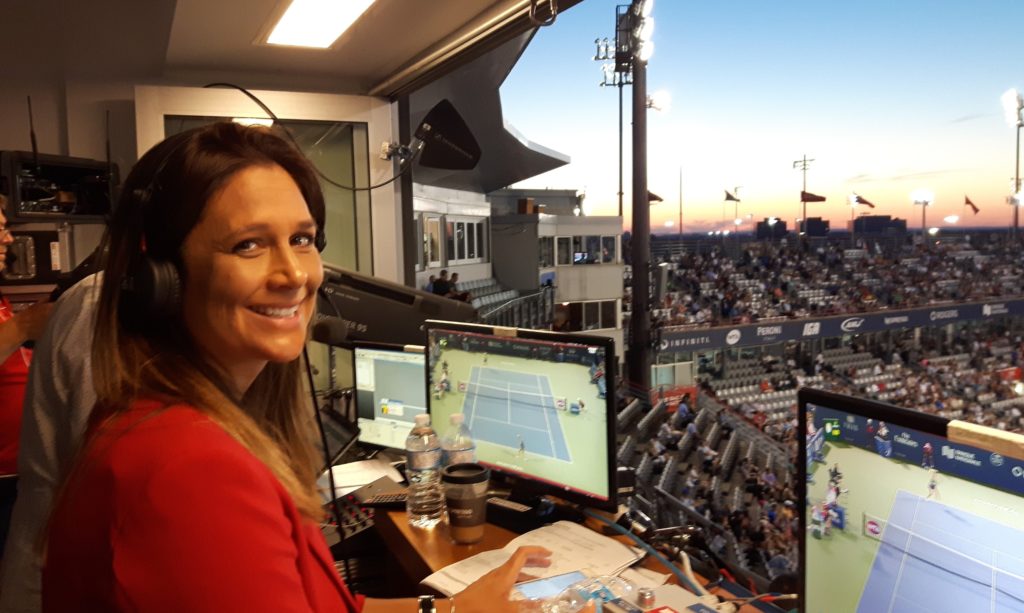
“I was thrilled for her,” said Marie-Ève. “They really deserved their title with two matches in one day on Sunday. They weren’t even sure they’d be entered because they were alternates. They’re actually the first team of alternates to win the title in Rome. We texted on the last three days of the tournament, and I was so excited for her.”
Pelletier clearly recalls a 2016 conversation they had when Sharon decided to hang up her racquet. “I asked her ‘Are you sure you want to stop? When everything’s over, it’s not that fun. You only get one opportunity to play. Then, it’s too late!’” she explained.
Marie-Ève says Sharon went through what many players who retire because of injury or for personal reasons go through: “When you leave that environment, you take a step back. Then, you start missing it, so you decide to come back. The difference is then you play for the right reasons.” She also believes Sharon’s fiancé Dylan Moscovitch has a lot to do with her comeback and especially her goal to play at the Tokyo Games.
“With her results in Rome, she’s definitely increased her chances. But besides Gaby Dabrowski, was she going to be asked to join the team or would Bianca Andreescu also play doubles, since she’s already qualified?”Marie-Ève wondered. “Still, with the situation in Japan being what it is, there’s no telling.”
Marie-Ève Pelletier
Kalamity for Karolina
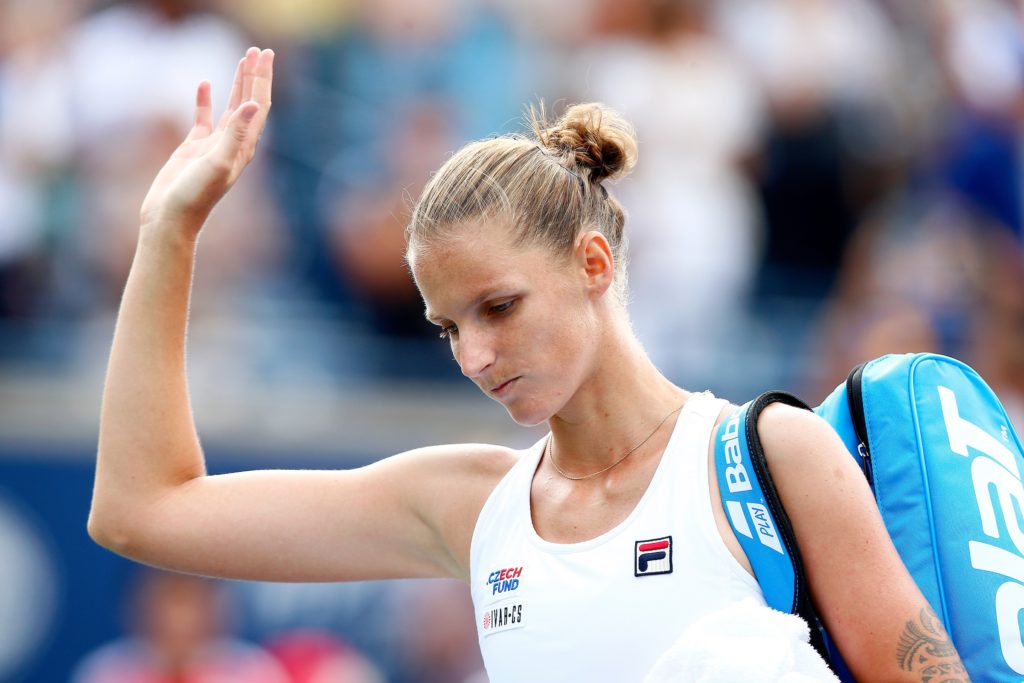
You don’t wish it on anyone, but it happens sometimes.
A 6-0 bagel is never fun for any tennis player, but it’s always a tad more humiliating for a pro.
Especially when it happens to someone who’s spent almost FIVE years in the Top 10.
Especially when it happens at an event that’s one step away from a Grand Slam.
Especially when it happens twice in one match.
On May 16, World No.9 Karolina Pliskova of the Czech Republic was obliterated by Iga Swiatek (15) in the final of the WTA 1000 in Rome—a first in the Eternal City.
In only 48 minutes, the 20-year-old Polish sensation played six service games and gave up a total of zero points in five of them. Practically perfect.
Since I had Marie-Ève Pelletier on the line (see the Sharon Fichman story) and she had just provided commentary on the match for TVA Sports, I asked for her take on the debacle. She was flabbergasted. “Not only was Swiatek having an amazing day, nothing was working for Pliskova. Out of 64 points, she only won 13.”
Like others before her, Pelletier has also been bagelled but prefers not to dwell. When I press her for details, she smiles and says her selective memory has made her forget.
So, what does a blank set feel like?
“Well, it depends how it happened. If most of the games were tight and only a few details made the difference, there’s some consolation in that. But that’s not how things went for Pliskova,” explains Marie-Éve. “I remember a match at the National Bank Open, in my home country. I was down 6-0, 3-0 when I finally won a game, and I raised my arms mockingly. Still, I knew I’d saved my honour, and that’s what mattered. NO ONE wants to be double bagelled!”
The Italians are coming!
Che fico!
I watched, mesmerized, as Novak Djokovic exhausted all his reserves to get past local hero Lorenzo Sonego in their semi in Rome last week. Carried by a loud crowd of compatriots, the 26-year-old played some inspired tennis but couldn’t better the World No.1.
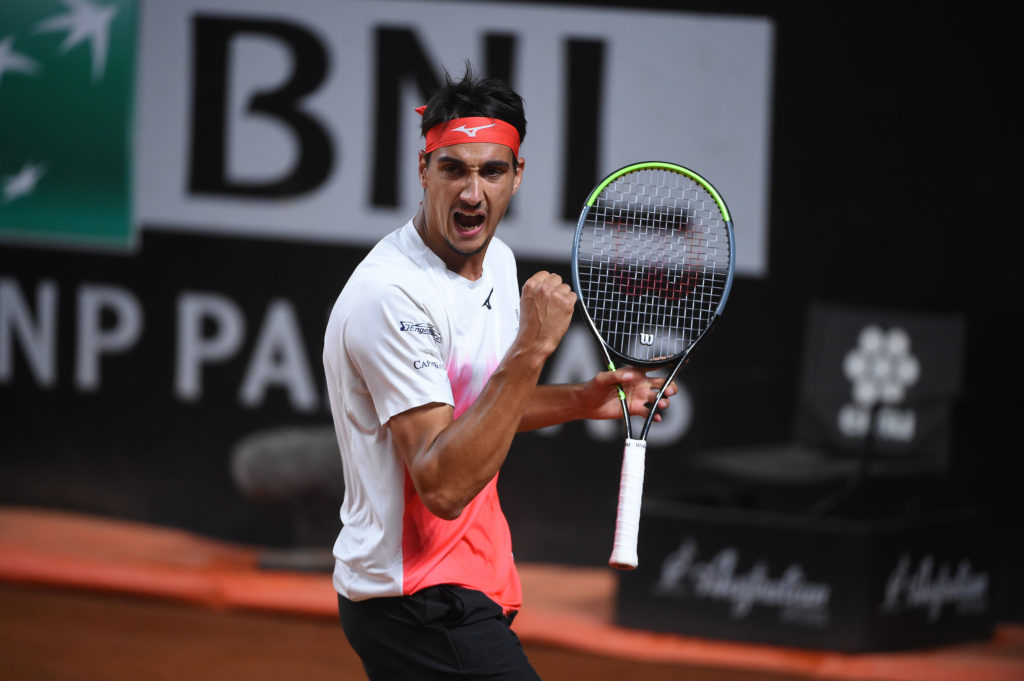
Sonego is one of several Italian ATP stars who’ve emerged in the past year. Stefano Travaglia and Salvatore Caruso also posted great results, and 19-year-old Lorenzo Musetti, who is currently climbing in the rankings, is partial to complicating things for members of the Top 20 (Félix Auger-Aliassime was a recent victim, in Lyon’s first round).
Then there’s 19-year-old Jannik Sinner, the most promising player out of Italy (and indeed the entire ATP), and the brawny Matteo Berettini who just entered the Top 10 at the age of 25.
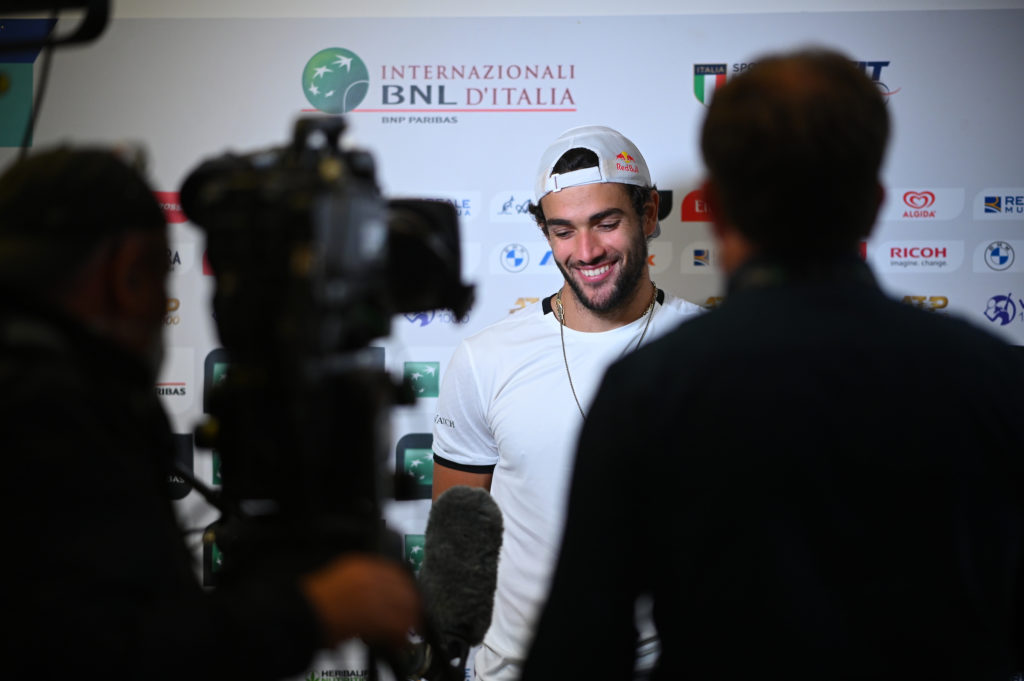
Everywhere you look, behind every locker room door in every tennis stadium, an Italian gladiator waits in the wings.
In 1966, Canadian film director Norman Jewison made The Russians are Coming! The Russians are Coming! Nominated for four Academy Awards, the movie was a huge hit in North America. The Italians are Coming! is the 2021 ATP edition. Except, it’s pure non-fiction and the tennis world doesn’t find it funny in the least.
There are currently nine Italians in the Top 100. Yes, NINE. That’s only one less than Spain (10) and two less than France (11).
To think that only Fabio Fognini and Andreas Seppi held the fort just a few years back!
Here they all are on May 17:
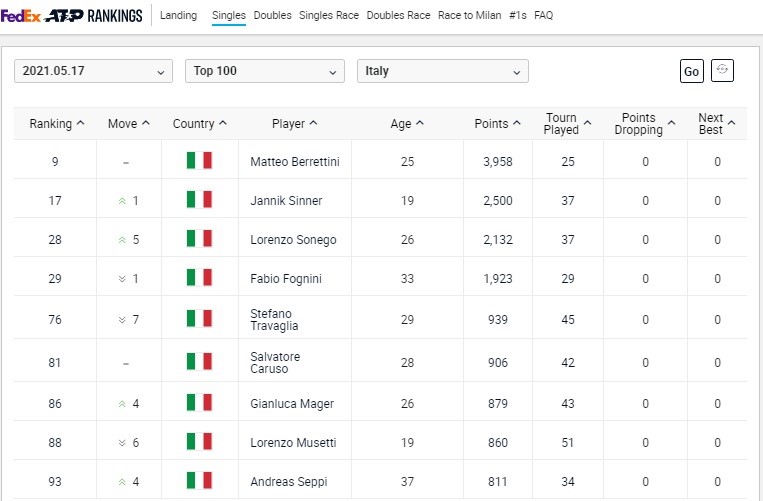
The secret to Rafa’s success
At the lead-in events to Roland-Garros and with his 35th birthday just 18 days away, the King of Clay posted a terrifying 14-2 record that just happens to include two titles.
Does anyone dare bet against him in Paris?
Despite age and wear, Rafael Nadal remains a dominant force. His secret? Iron discipline and the drive to play better.
It’s a mindset he’s always had. Just take a look at 13-year-old Rafa after his triumph at the 2000 Petits As.
Need I say more?
Get in touch with me!
Email: privard@tenniscanada.com
Twitter: @paul6rivard
Follow all our Canadians in action here.

